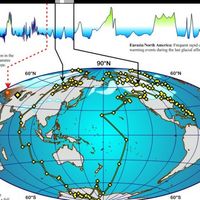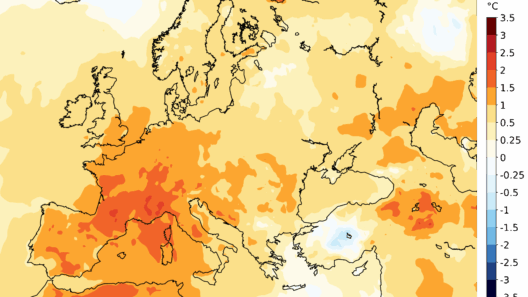Throughout Earth’s history, the geomagnetic field has undergone numerous reversals, a phenomenon in which the magnetic north and south poles switch places. This natural magnetic fluctuation, occurring over geologic timescales, raises an intriguing question: does geomagnetic reversal have any relevance to the contemporary global warming crisis? To answer this complex query, one must delve into the mechanisms of geomagnetism, the science of climate change, and the interconnectedness of Earth’s systems.
Firstly, it is imperative to understand what geomagnetic reversal entails. The Earth’s magnetic field, generated by the movement of molten iron within the outer core, has remained relatively stable for thousands of years. However, geological evidence suggests that these magnetic poles have flipped intermittently, potentially more than 170 times during the last 83 million years. These flips can occur over a relatively short period, sometimes within a few thousand years, and are thought to be influenced by various geological processes, including the motion of tectonic plates and changes in the flow patterns of the Earth’s molten core.
In stark contrast, global warming is an anthropogenic crisis primarily driven by the accumulation of greenhouse gases in the atmosphere due to human activities, such as burning fossil fuels, deforestation, and industrial processes. The result is a warming planet, characterized by melting ice caps, rising sea levels, and increasingly erratic weather patterns. Delving further, one can see that the implications of global warming are more immediate and palpable than those of geomagnetic reversal.
While the occurrence of geomagnetic reversal is a slow-moving geological process, global warming is a rapid manifestation of climatic change that promises perilous consequences for ecosystems and human societies alike. The interplay between these two phenomena, though seemingly minimal, warrants scrutiny. Lohmann et al. (2016) illustrate that the magnetic field could influence climate processes, albeit indirectly. A weakened magnetic field during reversal events could reduce the Earth’s protection against cosmic radiation, potentially affecting atmospheric chemistry and, subsequently, climate patterns.
However, despite these compelling notions, science does not support a direct correlation between geomagnetic reversals and the current trend of global warming. The timelines of these events are significantly misaligned. Geomagnetic reversals occur over tens of thousands of years, while the current trajectory of global warming has escalated precipitously since the Industrial Revolution. Indeed, the rate of temperature increase observed in recent decades is unprecedented when contrasted against historical geological data.
The magnetic field’s role in climate modulation is complex. While a weakened magnetic field during a reversal could permit increased solar radiation influx, the extent of this effect remains largely speculative. The more pressing concern lies in human-induced emissions, with carbon dioxide levels reaching the highest concentrations in at least 800,000 years. This focus on anthropogenic factors underscores that the primary driver of modern climate change is not a geological phenomenon but rather human activity.
Furthermore, the analogy of the Earth’s magnetic field serves as a reminder of the planet’s resilience and adaptability. Just as a tree, with roots entrenched in the soil, can bend with the winds yet remain standing, the Earth has navigated myriad shifts over millions of years. However, the increased pace of human-induced climate change presents a formidable challenge. The tree may bend, but if the winds grow too fierce and unrelenting, it risks uprooting.
Understanding the ramifications of geomagnetic reversals on long-term climate patterns can provide insights into Earth’s past climate, yet it remains essential to draw a distinct line between ancient geological events and the current climate emergency. Rather than being fixated on natural occurrences, the focus must pivot towards actionable measures that can mitigate the ongoing impacts of climate change.
Efforts such as reducing carbon emissions, advancing renewable energy technologies, and altering consumption patterns are paramount. The interrelation between human behavior and climate stability serves as a clarion call for immediate action. Combatting climate change is not merely a scientific endeavor; it is a collective moral obligation. The planet weaves a narrative, and the choices we make today will script its future.
In conclusion, the connection between geomagnetic reversal and global warming represents a fascinating intersection of earth sciences. The allure of magnetic mysteries can captivate the imagination, but they pale in comparison to the pressing realities of our warming world. As humanity confronts the dual challenges of climate change and natural occurrences like geomagnetic reversal, it is essential to remain grounded in current realities—driven by science, foresight, and collective responsibility. In the grand tapestry of Earth’s history, it is the threads of human actions today that will echo in the climate narratives of tomorrow.








